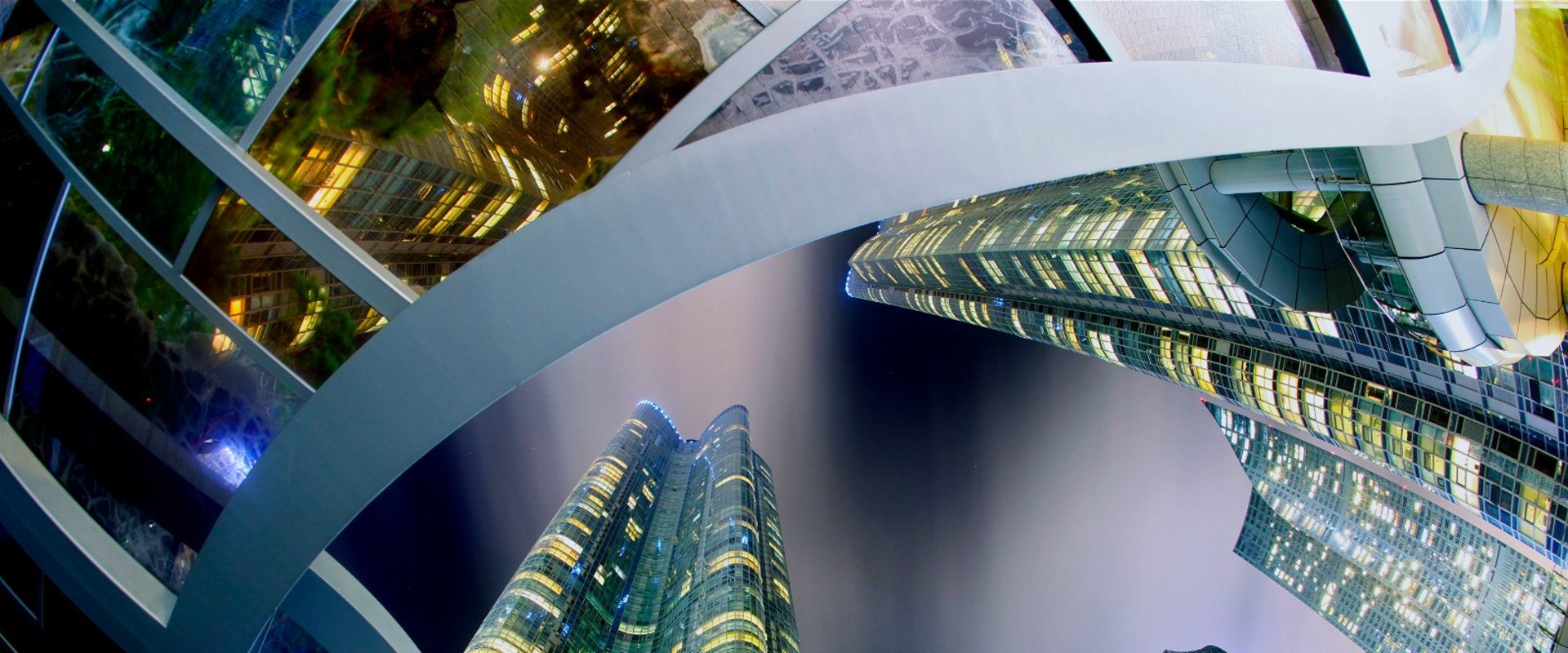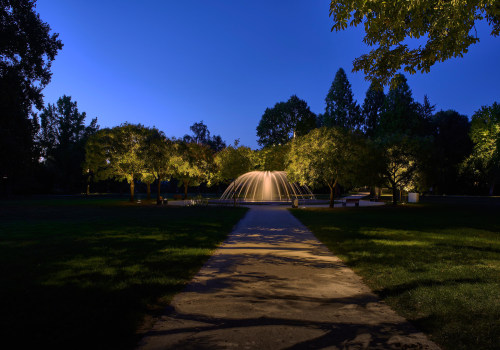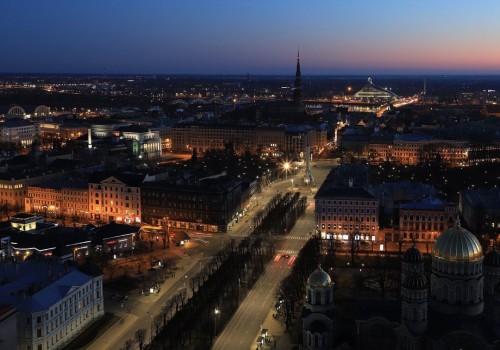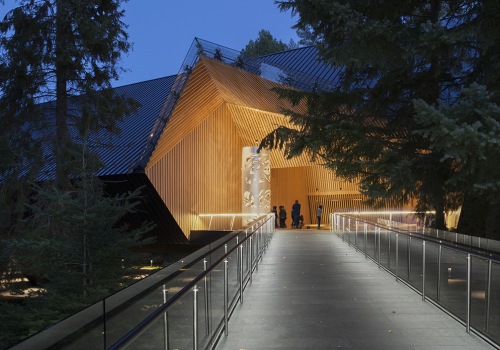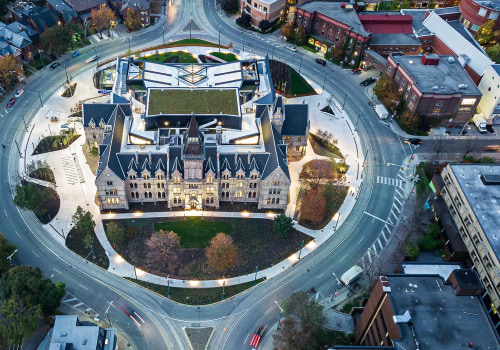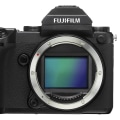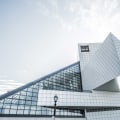Aerial architectural photography is one of the most challenging and rewarding genres of photography. Capturing stunning images of buildings, monuments, and other structures from the air requires the right camera settings and lenses. If you're looking to take your aerial architectural photography to the next level, then this article is for you! We'll provide tips and techniques to help you get the best shots from your aerial sessions. Whether you're a beginner or a seasoned pro, you'll find something useful here.
So let's get started!Aerial architectural photography is an exciting way to capture stunning images of structures from a unique perspective. However, in order to get the perfect shot, you need to make sure you have the right camera settings and lenses. This article will cover the best camera settings and lenses for aerial architectural photography, as well as important tips and techniques to help you get the most out of your aerial photography.
Camera Settings
When it comes to choosing the best camera settings for aerial architectural photography, there are a few key points to consider. First, you should make sure you have a high-quality digital camera with manual settings.This will allow you to adjust the shutter speed, aperture, ISO, and other settings to get the best possible image quality. You should also set your camera to shoot in RAW format as this will give you more flexibility when editing the photos later on. Additionally, it's important to choose the right white balance setting as this will help ensure that colors are accurately represented in your photos.
Lenses
In addition to choosing the right camera settings, it's also important to choose the right lenses for aerial architectural photography. Wide-angle lenses are best for capturing more of the scene in one shot.However, for more detailed shots, a telephoto lens can be used to zoom in on specific parts of the structure. If you're shooting from a drone, then a wide-angle lens is typically the best option.
Tips and Techniques
Once you have your camera and lens set up correctly, there are a few tips and techniques that can help you get the best results from your aerial architectural photography. One of the most important things is to pay attention to lighting conditions. If possible, try to photograph your subject when the sun is low in the sky as this will create dramatic shadows and highlights that can add depth and interest to your photos.Additionally, it's a good idea to practice your framing techniques in order to get the most out of every shot. It's also important to think about how you're going to use the photo after it's taken. Are you going to print it out, or share it online? If you plan on printing it out then it's important to consider the aspect ratio of your camera and make sure that your photos are properly sized for printing. If you plan on sharing them online then you'll want to make sure that they are properly compressed for quick loading times.
Examples of Aerial Architectural Photos
To illustrate some of the tips and techniques discussed above, here are some examples of aerial architectural photos:- This image was taken at sunrise with a wide-angle lens and low ISO setting to capture all of the details of this historic building.
- This image was taken with a telephoto lens at sunset which created a beautiful silhouette effect.
- This image was taken during golden hour with a wide-angle lens and high ISO setting which allowed for great detail and clarity.
Additionally, if you're photographing buildings from a distance then it's important to make sure that you have permission from the owners before taking any photos. Another challenge is dealing with changing light conditions which can make it difficult to get consistent results over time. To help minimize this problem, it's important to practice different techniques such as bracketing or using exposure compensation. Finally, if you're shooting from a drone then you'll need to make sure that you have the proper authorization from the Federal Aviation Administration (FAA) before taking any photos.
Tips and Techniques
When it comes to aerial architectural photography, there are many techniques and tips to consider. Composition, lighting, and post-processing are all essential elements of any successful shoot. Shooting in RAW format is highly recommended as it gives you greater control over the editing process and allows for more flexibility when it comes to post-processing.Additionally, shooting in manual mode will help you adjust settings such as shutter speed, aperture, and ISO to ensure you capture the best images. When composing your shots, think about the elements of the architecture that make it unique. Focus on the lines, shapes, and textures that make up the building or structure to create an interesting composition. Be sure to pay attention to the lighting as well, as this can help highlight details and give your photos a more dynamic look.
Additionally, when possible, use natural light rather than artificial light. Post-processing is also important when it comes to aerial architectural photography. Adjusting the contrast, color saturation, and sharpness can all help create a more pleasing image. Additionally, cropping and straightening can help to frame the shot better and make it look more professional.
Finally, shooting in RAW format will help ensure you capture the most detail from your shots. RAW files are larger than JPEGs and contain more information, giving you greater control when it comes to post-processing. Additionally, shooting in manual mode will allow you to adjust settings such as shutter speed, aperture, and ISO for more control over your final image.
Camera Settings
Aerial architectural photography requires the use of special camera settings to capture the perfect shot. This includes adjusting the shutter speed, ISO, white balance, focus mode, aperture and exposure compensation.Shutter speed is one of the most important camera settings for aerial architectural photography. It determines how quickly the camera’s shutter opens and closes when taking a photo. The slower the shutter speed, the more light is let in, which can create an interesting effect. However, for aerial photography, it is best to use a faster shutter speed, as this will help to reduce motion blur.
The ISO setting also plays an important role in capturing the perfect shot. It determines how sensitive your camera’s sensor is to light. A higher ISO setting will make your photos brighter, but it can also create more noise. For aerial architectural photography, it is best to use a low ISO setting to reduce noise and ensure that your photos are crisp and clear.
White balance is another important setting to adjust when shooting aerial architectural photography. This setting determines how the colors in your photos will appear. For example, if you are shooting at sunrise or sunset, you may need to adjust the white balance to make sure that the colors in your photos are accurate. Focus mode is another essential setting for aerial photography.
It determines how quickly and accurately your camera will focus on a subject. For aerial architectural photography, it is best to use manual focus mode, as this will allow you to precisely set the focus point. Aperture is another important camera setting for aerial photography. This setting determines how much light is let into your camera’s lens.
A larger aperture will allow more light into your photos, while a smaller aperture will reduce the amount of light. For aerial photography, it is best to use a wide aperture to ensure that your photos are bright and clear. Finally, exposure compensation is an important setting for aerial photography. This setting allows you to adjust the brightness of your photos by increasing or decreasing the amount of light that is let into your lens.
For aerial architectural photography, it is best to use a slightly higher exposure compensation to ensure that your photos are bright and clear.
Lenses
When it comes to lenses for aerial architectural photography, there are a few different types to choose from. Zoom lenses are great for allowing you to get a closer shot of the architecture without having to move your drone, while wide angle lenses allow you to capture more of the scene in a single shot. Telephoto lenses are great for capturing details from far away, while prime lenses provide a high-quality image with little distortion. Zoom lenses can be great for aerial architectural photography as they allow you to get closer to the subject without having to move your drone.A good example of this is the Tamron 16-300mm F/3.5-6.3 Di II VC PZD MACRO lens, which offers a wide range of focal lengths and excellent image quality. It's also lightweight and compact, making it ideal for drone use. Wide angle lenses are also popular for aerial architectural photography, as they allow you to capture more of the scene in a single shot. The Sigma 10-20mm f/3.5 EX DC HSM lens is an excellent choice for this type of photography, as it has a wide angle of view and provides excellent image quality.
Telephoto lenses can be great for capturing details from far away and can be used to create dramatic images of the architecture. The Sigma 150-600mm F/5-6.3 DG OS HSM lens is a good example of this type of lens, as it offers a wide range of focal lengths and excellent image quality. Prime lenses are also very popular for aerial architectural photography, as they provide high-quality images with little distortion. The Canon EF 50mm f/1.8 STM lens is a great choice for this type of photography, as it offers sharp images and fast autofocus.
Aerial architectural photography can be a great way to capture amazing images from a unique perspective. To get the most out of your aerial photography, it is important to use the right camera settings and lenses. The best camera settings and lenses for aerial architectural photography depend on the type of shot you are trying to capture. Additionally, there are several tips and techniques you can use to improve your aerial photography skills.
With the right camera settings, lenses, and tips, you can take stunning aerial architectural photos.

